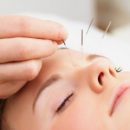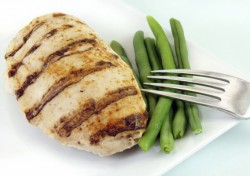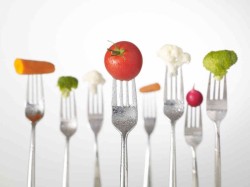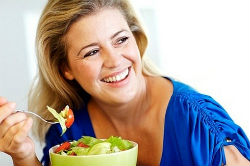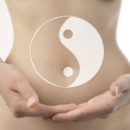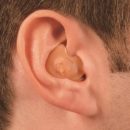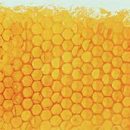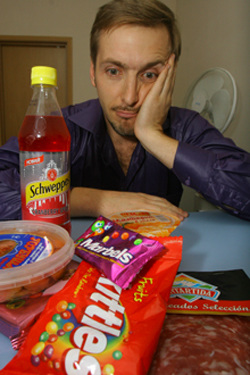
To date, the modern food market is characterized by a very wide range of choices, both in the range and price categories. This development is deterministic, first of all, the increase in demand of the consumer. But if demand is justified by demand, and whether freedom of choice is indeed absolutely, as it seems?
The choice of this or that kind of food is due to this day by several factors:
- Consumer lifestyle;
- its solvency;
- health condition and related food restrictions.
Our site would like to focus on the last paragraph. The problems associated with the health of a person are not always characterized by genetic heredity or predisposition to a particular view of the disease, as well as the influence of environmental factors. Recently, food is becoming increasingly affected by food in the daily diet of consumption, and to be more accurate - their composition, which in turn, is replete with a list of all sorts of so-called food additives, the most common among which are ingredients with Index E.
Is it safe to consume such products?
E-standards

Letter «E» On the label of the composition of a particular food product indicates a compliance with the European standard of power, and the digital index is the appearance of the additive itself. Once, the names of these chemicals were indicated in the composition of the products in full, but due to the names of the titles, a substitution was replaced by alphanumeric code.
To date, not only in the territory of the Russian Federation, but also in Europe, the use of e-additives in the production of food is prohibited. But only some.
The right to ban the European Commission, and field checks, that is, in the territory of food enterprises and shops, the so-called food and veterinary service inspection is carried out and that is not everywhere.
How this system works?
E-additive tests are carried out on animals and in humans in accredited European laboratories. When taking into account the lack of negative consequences and influences on the body, additives include a list of permitted. Otherwise, when the inspectors of food-veterinary services are found when checking the food products, which include prohibited E-components, is made of inside. The frequency of this kind of checks is once every six months. That is, in the intermediate six months in the absence of data on the dangers of one or another additive on the basis of research, people consume in food is unknown that.
Ironity of this «Nourishing scenario» This does not end. E-components are prohibited in the presence of a threat to life, for example, those that lead to death. There remains a large mass of others in the shade, or few studied or not characterized as «Dangerous». That is, if preservatives are not globally recognized as fatal for consumption in food, they can be considered non-hazardous. And this is not the only example, causing at least doubt.
Here are some examples of similar e-elements added to the composition of our food-produced:
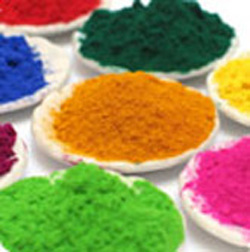
E102 - Tartrazine - Dye. On the territory of our country is allowed, but is prohibited in the territory of the European Union.
Impact on the body:
- Food allergy.
Food with tartrazine content: confectionery, candy, ice cream, drinks.
E128 - Red Red 2G dye with carcinogenic effect used in the production of sausages with grain and legumes more than 6% and crushed meat products and a pink product. It is a genotoxic compound, that is, having the ability to cause changes in genes. E128 is prohibited for use in Russia!
Impact on the body (long-term response period after the point of use):
- oncological diseases;
- fetal development anomalies;
- Congenital pathology.
Products with red dye Red 2G: sausages and sausages (especially cheap).
E216 and E217 - Preservatives (propellant ether and sodium salt). Prohibited in Russia!
Impact on the body:
- Food poisoning.
Food with the content of this type of preservative: Candy, chocolate Startling, meat products, jelly stuffed, soups and broths.
E250 - sodium nitrite - dye, seasoning and preservative, used for dry preservation of meat and stabilization of its red. E250 is allowed to use in Russia, but prohibited in the EU.
Impact on the body:
- Increased instability of the nervous system in children;
- Oxygen starvation of the body (hypoxia);
- reduction of the content of vitamins in the body;
- Food poisoning with possible fatal outcome;
- oncological diseases.
Products with sodium nitrite content: bacon (especially roasted), saltin, sausages, ham, smoked meat and fish.
E320 - antioxidant to slow down the oxidative process in fat and oil mixtures (allowed in Russia, but is considered dangerous to health).
Impact on the body:
- Heath of cholesterol content in the body.
Food with the content of antioxidant E320: some products with fat content; Chewing gum.
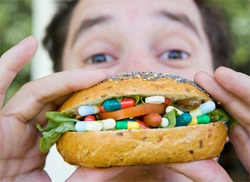
E400-499 - thickeners, stabilizers to increase product viscosity (most of them are prohibited in the Russian Federation).
Impact on the body:
- Diseases of the digestive tract.
Products with the content of these types of e-additives: yoghurt cultures and mayonnaise.
E510, E513 and E527 (from the E500-599 group) - emulsifiers creating homogeneity with a combination of non-disheveled products, such as water and oils.
Impact on the body:
- diarrhea;
- liver failures.
E951 - Aspartame - synthetic sugar substitute.
Impact on the body:
- exhaustion of serotonin reserves in the cerebral cortex;
- Development of manic depression, panic seizures, violence (with excessive use).
Products with aspartam content: chewing gum, carbonated drinks (especially imported production).
Prohibited E-additives
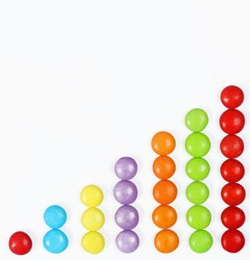
To date, only an approximate list of e-additives can be given, which are prohibited in the territory of the Russian Federation on the basis of decisions based on RAMS's nutrition research:
E121 - Citrus Red Dye;
E123 - Dye red amaranth;
E240 - Preservative formaldehyde, classifying which can be attributed to the same group of substances as arsenic with blue acid - deadly poisons;
E116-117 - Preservatives, actively used in the production of confectionery and meat products;
E924A and E924B - the so-called «Flour and bread improvers».
Also forbidden such additives: E103, E107, E165, E167, E140, E153-155, E166, E173-155, E180, E173-175, E180, E182, E209, E213-219, E225-228, E230-233, E237, E238, E240, E241, E252, E253, E264, E281-283, E302, E303, E305, E308-314, E317, E318, E323-325, E328, E329, E343-345, E349, E350-352, E355-357, E359, E365-368, E370, E365-368, E370, E375, E381, E384, E387-390, E399, E403, E408, E409, E418, E419, E429-436, E441-444, E446, E462, E463, E465, E467, E474, E476-480, E482-489, E491-496, E505, E512, E519-523, E535, E537, E538, E541, E542, E550, E552, E554-557, E559, E560, E574, E576, E577, E579, E580, E622-625, E628, E629, E632-635, E640, E641, E906, E908-911, E913, E916-919, E922-926, E929, E942-946, E957, E959, E1000, E1001, E1105, E1503, E1521.
And this is not the whole list. In addition, where the guarantee is that the E-elements prohibited for the production are not used?
E-supplements allowed in Russia, but considered dangerous
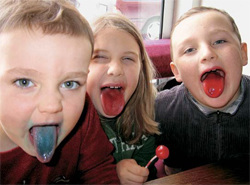
Food additives E105, E126, E130, E131, E143, E152, E210, E211, E330, E447 - are factors that determine the growth of malignant tumors.
E221-226, E320-322, E338-341, E407, E450, E461, E466 - provoking the formation of diseases of the gastrointestinal tract.
Food additive E239 can cause an allergic reaction.
E171, E320-322 - Additives causing liver and kidney disease.
In addition, it is prohibited in the European Union, but still allowed in Russia the following additives: E102, E104, E110, E111, E120, E141, E142, E120, E141, E142, E150, E212, E250, E251, E311-313, E477.
Analysis of the food market
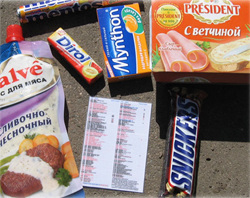
Analysis of the state of the modern food market for content among them dangerous to the health and life of a person of food E-components showed that most of the proposed range contains a greater or lesser extent the above substances.
As an example, some list of brands of the modern food market can be brought, among which the E-elements are detected, which are dangerous for the life of the Individual:
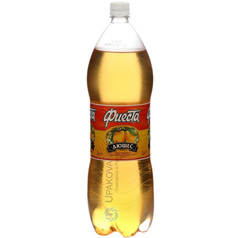
one. Among carbonated drinks:
- «Fruit dusses», as well as «Fiesta Diushes», derivatives from the company COCA-COLA (contain aspartame E951);
- All other subsidiaries from the Coca-Cola manufacturer;
- «Lemonade» (Greiting);
- «Raspberries» (Salute Cola);
- «Barberry» (Assorted);
- «Sitro» (Salute Cola) and DR.
2. Among the chewing gum, especially those who are popular in our day:
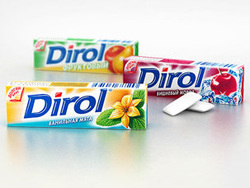
- «Dirol» (contains in its composition the thickener E414, provoking the diseases of the gastrointestinal tract; Antioxidant E330; Preservative E296; Dye E171; Emulsifier (as directed by packaging) E322, which is an antioxidant, as well as E321 and glazing E903);
- «Orbit» (contains sorbitol E420 related to the group of emulsifiers and stabilizers; Malthith E965 (antiflaming defoamer, and how dangerous it is to judge the consumer); stabilizer E422; thickener E414; Dye E171; Sweetener Aspartame E951 and DR.).
Which of these zhwamk is less dangerous and whether it is worth consumed at all - the personal matter of everyone!
3. Among some alcoholes-containing Energy Drinks:
- «ABSENTER ENERGY» (Contains the E414 stabilizer; acidity regulator, it is also an antioxidant E330; preservative E211);
- «Jaguar» (Contains preservative E211; dyes);
To the same group include most of those not containing alcohol energy, even if in the composition and does not appear the letter code «E», Our site advises to pay attention to the name of the contents of the components, otherwise it is justifest «Energy» Action on the body?!
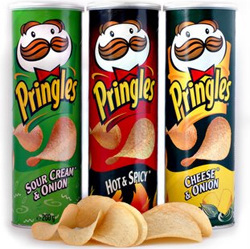
4. Among chips and crackers:
- «Lays» in a small package (contains aspartame E951);
- «Prelles» (Contains E471 emulsifier);
- crackers «Kirieshki» (It contains an amplifier of taste E621, E627, E631, E551, Dye E100 and DR.).
five. Among fermented milk products:
- «Activia» With the addition of something, be something fruit or cereals (in the composition of the thickener E1442);
- «Rustist yogurt with fruit puree» (the same thickener E1442; dyes and others.) - baby food product!!!
- «Danissimo» (thickener E1442, acidity regulators).
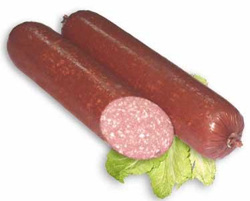
6. Among sausages:
- sausage «Kiev Servelat» Sausage plant «Kanevskaya» (As part of which stabilizers and preservative nitrite sodium E250);
- «Amateur» boiled the same manufacturer (contains a color preservative, as well as sodium nitrite E250);
7. Among the brands of ice cream:
As an example, you can bring products «La Fam», where
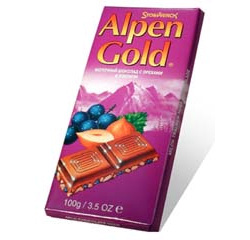
Detected Dye E102, E133, Stabilizers E407, E410, E412, E466, E471. And this is what our children eat!
eight. Among well-known chocolate producers:
- «Sweet» and «Alpen Gold» (contain E476, stabilizers);
- «NOTKS» (E124 and E476 found in the composition).
The consumer today must be more than vigilable in his choice and take into account at least the results of the latest research in this area, as well as coordinate your diet with a list of harmful and hazardous substances.


